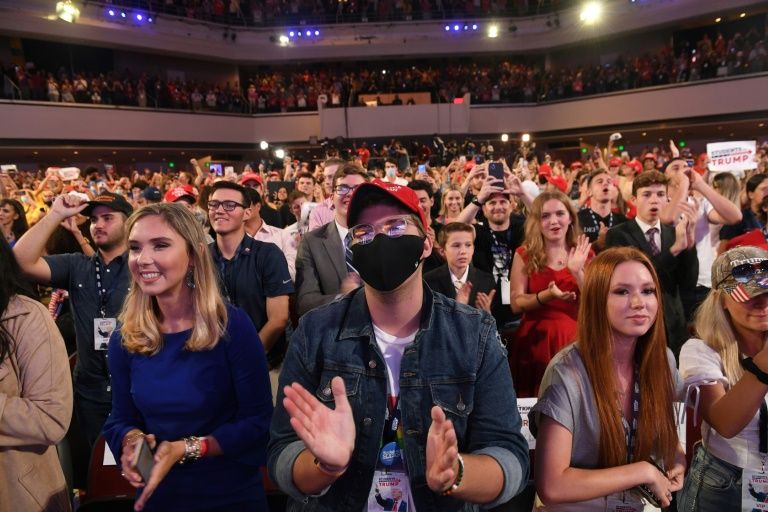Why is the US experiencing a coronavirus resurgence?
()
A patchwork of responses at the official level, the politicization of masks and physical distancing, and the widespread onset of complacency are to blame.
– Where do we stand now? –
Unlike Europe and parts of East Asia, the United States never climbed down from its peak.
Where other countries can talk about planning for second waves, the hardest-hit country in the world is still experiencing its first.
In April, the number of new daily cases was above 30,000, which stabilized for some time at around 20,000 a day in May, before rebounding once more to more than 30,000 in the past few days.
These numbers in fact reflect the cumulative impact of regional outbreaks. New York and the northeast became the global epicenter in February and March, but have since brought cases under control and their curves are bell-shaped like those of Europe.
But since June the virus has exploded in the country’s south and west, in states like Arizona, Florida and Texas, but also in California which like New York was struck early and took tough lockdown measures right away.
The surge has been tied in part to large gatherings on Memorial Day on May 31, the easing of official lockdowns, and growing complacency on the individual level.
– Are Americans wearing masks? –
It depends on where in the country you’re talking about and on political persuasion.
Wearing a mask and maintaining an appropriate physical distance are urged in federal guidelines, but that hasn’t been made mandatory in many of the regions now seeing surges.
On the other hand, in cities like the capital Washington, mask-wearing is the norm, with people voluntarily wearing them outside too, including in places like parks.
These differences reflect the country’s polarized politics, with many Republicans casting face coverings as an assault on their liberty and a liberal conspiracy to stoke fear.
Largely liberal California issued a statewide mask order, but the state itself is not a monolith and anti-mask sentiment, as well as protests, have broken out in some areas, like Orange County.
There are signs, however, that some on the political right may be rethinking that stance.
Florida’s Governor Ron DeSantis, who has long resisted demands to issue a statewide order, was seen donning a mask at a public event this week, after avoiding them in earlier appearances.
“Everyone should just wear a damn mask,” Republican Senator Marco Rubio, who is from Florida, said Tuesday.
– Is more testing the reason? –
Not really. It’s true that as tests have ramped up, more mild cases are being captured than they were at the start of the pandemic.
That said, the growth rate of cases is outstripping the increased level of testing, and states experiencing surges are also seeing the total rate of positive tests surpassing five percent — a telltale sign of rampant spread, according to the World Health Organization.
Florida, indeed, has seen a reduction in testing alongside its increase in cases.
More proof comes in the growing number of hospitalizations in Texas, Arizona, and to a lesser extent in California.
Where cases come, deaths follow a few weeks later. Thus the US death rate, which had been falling for months, has stabilized on a plateau that corresponds to outbreaks that flared up in late May.
– Is the epidemic ‘getting younger’? –
Yes, according to data by the Centers of Disease Control and Prevention (CDC) as analyzed by Harvard researchers.
“The proportion of positive COVID tests <65 increased from 63% to 82% from March 1-May 31,” said health policy researcher Thomas Tsai.
This would appear consistent with the idea that the least vulnerable in society are getting restless and eager to get back to “normal.”
Epidemiologists are also tracking the impact of the protests against racism sparked by the police killing of George Floyd on May 25.
“A few months ago numbers were going up, mostly concentrated in a few states, whereas now they are much, much more widespread,” said William Hanage, a Harvard epidemiologist.
“The increase that we are seeing right now has the capacity to produce far more disease in the future.”
Disclaimer: Validity of the above story is for 7 Days from original date of publishing. Source: AFP.


